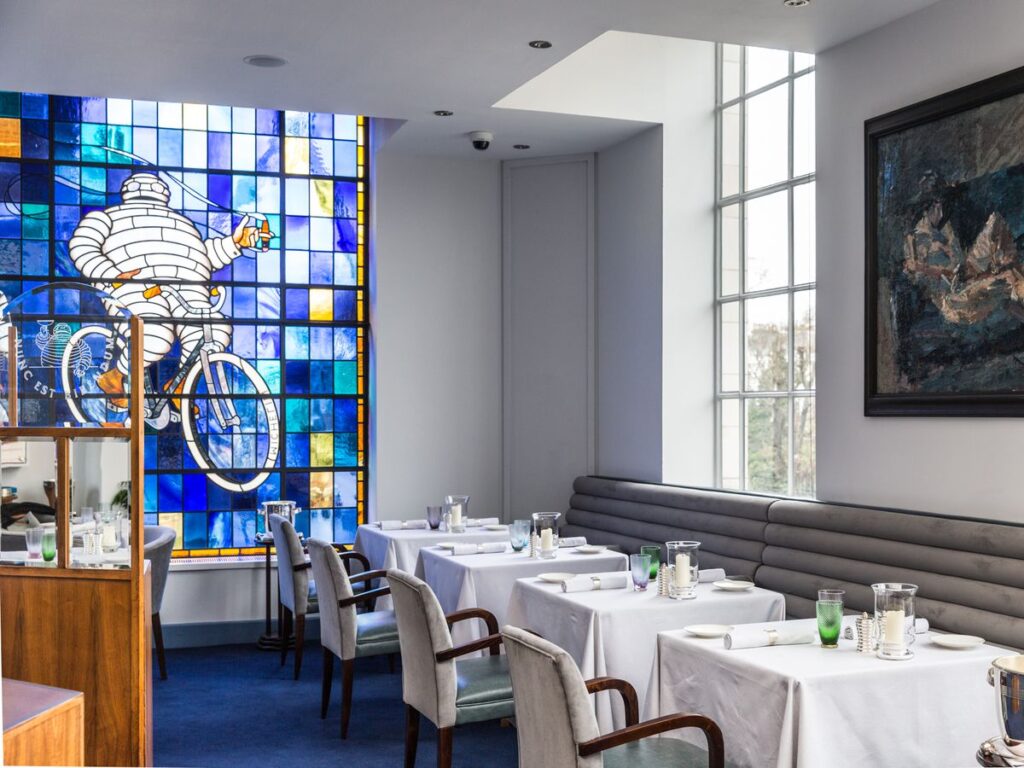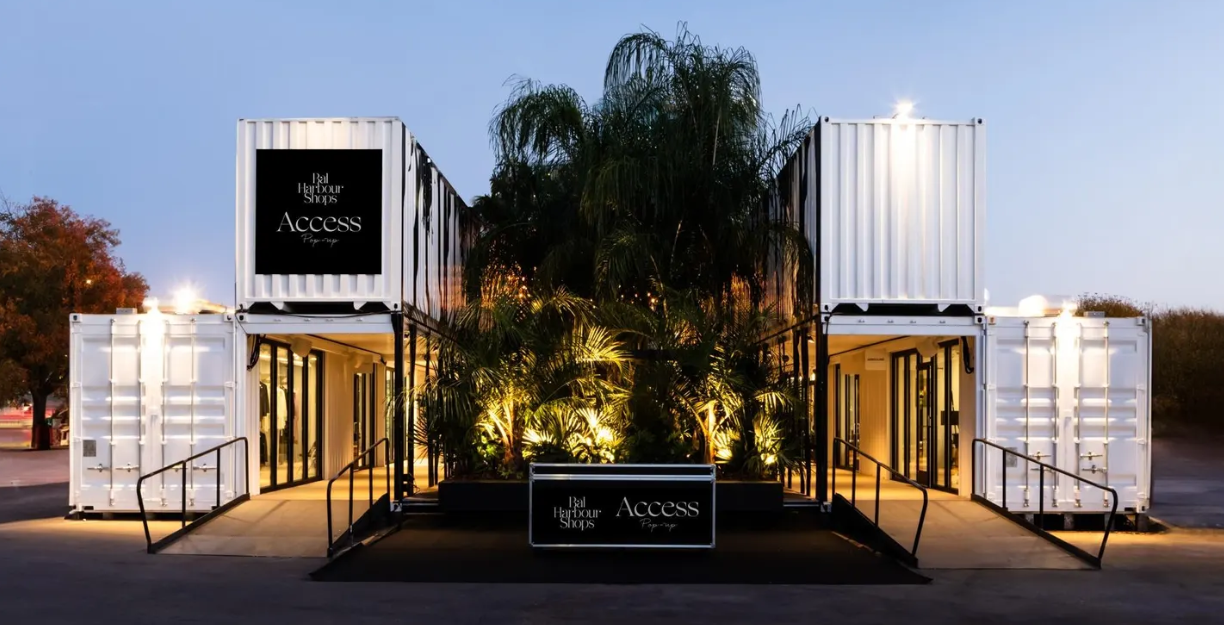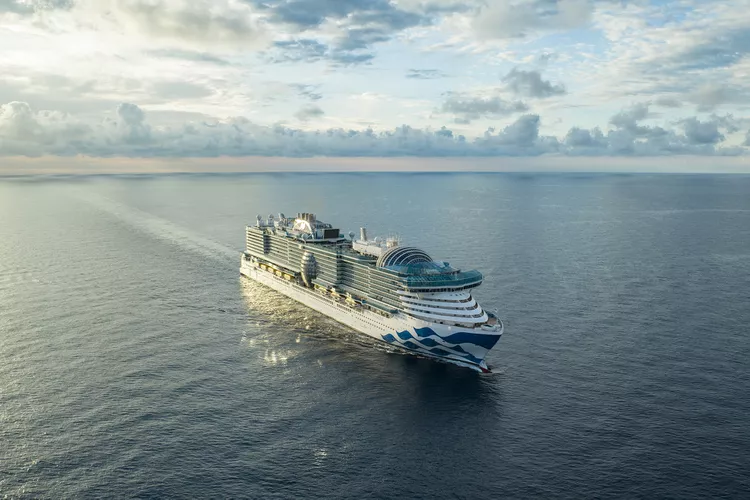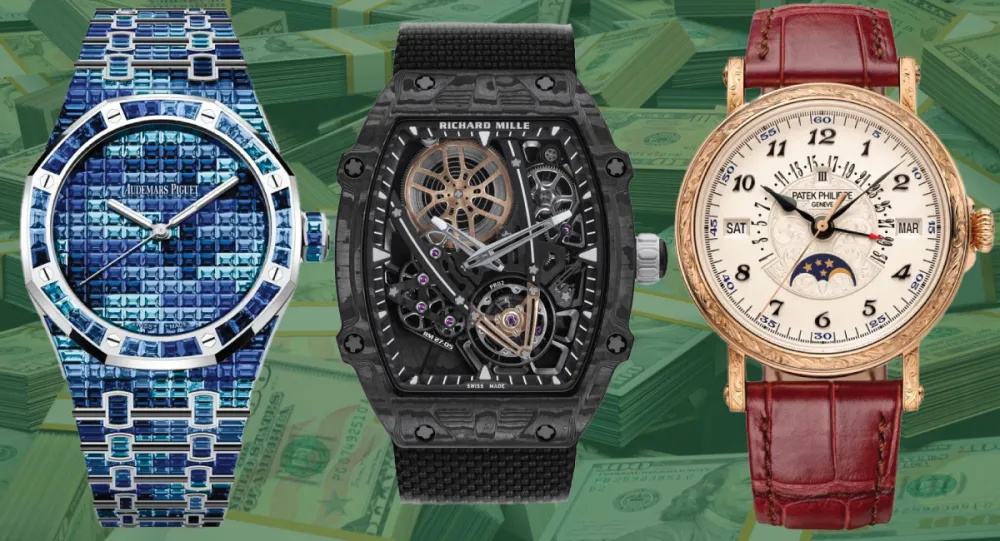In the enchanting world of European cuisine, a culinary compass guides discerning food lovers to the most exceptional dining experiences. That compass is the Michelin Guide, an illustrious institution renowned for carefully selecting Europe’s crème de la crème restaurants. Imagine a guidebook so revered that receiving a Michelin star is akin to winning an Oscar in the gastronomic realm.
In this journey through the heart of European dining, we will unravel the secrets behind the Michelin Guide’s discerning eye, exploring how it singles out the continent’s best restaurants. Beyond the tempting dishes and exquisite flavors, the Michelin Guide symbolizes culinary excellence, steering food enthusiasts toward the most extraordinary gastronomic adventures.
But how exactly does this guide, with its iconic red cover and white star symbol, distinguish Europe’s best from the rest? The answer lies in a carefully crafted process, anonymous inspectors, and stringent criteria that have made Michelin stars the most coveted accolade in the culinary world. So, fasten your seatbelts and join us on a culinary voyage as we demystify “How the Michelin Guide Selects Europe’s Best Restaurants.”
The Historical Significance
To truly grasp the significance of the Michelin Guide in gastronomy, we must embark on a journey back in time to the early 20th century. This is where the remarkable story of the guide’s inception unfolds, which would forever change how we dine and appreciate culinary excellence.
The Michelin Guide was born from the vision of two brothers, André and Édouard Michelin, who co-founded the Michelin tire company in 1889. In 1900, the brothers conceived a brilliant marketing strategy to promote their tires, boost the burgeoning automobile industry, and elevate the fine-dining world.
At that time, automobiles were still a novelty, and long-distance travel was daunting. André and Édouard Michelin recognized the need for a comprehensive guide to help motorists navigate the winding roads of France. Thus, in 1900, they published the first Michelin Guide, a free, pocket-sized booklet containing practical information, such as maps, repair instructions, and tire-changing tips.
However, what set the Michelin Guide apart from other roadmaps of the era was its inclusion of a list of local hotels, restaurants, and gas stations. This marked the guide’s initial foray into the world of culinary recommendations.
The guide’s popularity grew rapidly, and 1920, the Michelin brothers introduced a star-rating system. Restaurants were now awarded stars, with one star denoting “a very good restaurant in its category,” two stars signifying “excellent cooking, worth a detour,” and three stars reserved for establishments of “exceptional cuisine, worth a special journey.”
The brilliance of the Michelin Guide lay in its anonymous and highly-trained inspectors, who visited restaurants incognito and meticulously evaluated every aspect of the dining experience. This ensured that the reviews were impartial and based solely on the quality of the cuisine, setting a standard of excellence that would become the envy of chefs worldwide.
Over the years, the Michelin Guide expanded its reach beyond France, covering other European countries and eventually venturing into Asia, the Americas, and beyond. It became the most prestigious and influential restaurant guide globally, bestowing its coveted stars upon only a few.
Today, the Michelin Guide continues to shape the culinary world, guiding food enthusiasts to exceptional dining experiences while propelling chefs and restaurants to international stardom. Its historical significance lies not only in its promotion of fine dining but also in its role as a cultural institution, celebrating the artistry of chefs and the diversity of global cuisine.
As we delve deeper into how Michelin selects Europe’s best restaurants, we must acknowledge the guide’s remarkable journey from a humble tire company’s marketing tool to an unparalleled authority on gastronomy. This historical backdrop sets the stage for understanding the meticulous process and criteria that define Michelin-starred dining establishments.
The Michelin Guide’s journey from a tire company’s marketing venture to a culinary institution is historically significant and culturally transformative. It’s a testament to the power of innovation, marketing genius, and a deep appreciation for the pleasures of the open road and exquisite cuisine.
As the guide continued to evolve, it played an instrumental role in shaping the restaurant industry. The introduction of Michelin stars added an element of prestige that was previously unknown. Restaurants strived to cater to local patrons and achieve culinary excellence worthy of Michelin recognition. This shift in focus elevated the standards of dining establishments across Europe and, later, worldwide.
The anonymous inspections carried out by Michelin’s inspectors became legendary. Shrouded in secrecy, these anonymous diners dined unannounced at restaurants like regular patrons. They meticulously evaluated every aspect of the dining experience, from the quality of ingredients and the chefs’ skills to the ambiance and service. This rigorous process ensured that Michelin-starred restaurants were not merely selected but earned through consistent excellence.
Over time, Michelin stars became a symbol of culinary achievement, a mark of distinction that chefs and restaurant owners aspired to attain. The allure of Michelin stars extended beyond the world of food, drawing attention from celebrities, dignitaries, and discerning travelers seeking unforgettable dining experiences.
The Michelin Guide’s influence was not limited to Europe. It expanded its reach to Asia, the Americas, and beyond, recognizing and celebrating diverse cuisines and culinary traditions. Each new edition of the guide was eagerly awaited by chefs and restaurateurs worldwide, as a Michelin star could transform a modest eatery into a globally acclaimed dining destination.
In addition to the prestigious stars, the Michelin Guide introduced other recognitions, such as the Michelin Plate and the Bib Gourmand. These designations highlighted restaurants that, while not earning stars, still offered outstanding dining experiences, promoting a wider range of culinary diversity.
Today, the Michelin Guide remains a touchstone of culinary excellence, guiding food enthusiasts to unforgettable meals and shaping the careers of countless chefs. A Michelin star is still one of the highest honors a restaurant can achieve, and the guide’s rigorous standards continue to inspire chefs to push the boundaries of culinary artistry.
The Michelin Guide’s historical significance lies in its promotion of fine dining and its transformation of the culinary landscape. From its humble beginnings as a tire company’s marketing ploy, it has become an unparalleled authority on gastronomy, elevating the art of dining and celebrating the diversity of global cuisine. As we delve further into the intricacies of how Michelin selects Europe’s best restaurants, we must appreciate the guide’s remarkable journey and its enduring impact on the world of food.
The Prestigious Reputation
In the realm of gastronomy, there exists a symbol so coveted that it can make or break a restaurant’s destiny—the Michelin star. Much more than a mere rating, a Michelin star has evolved into the ultimate badge of honor for restaurants worldwide. To understand the profound impact and prestigious reputation of Michelin stars, one must delve into their history, rigor, and transformative effect on the culinary landscape.
A Starry Beginning
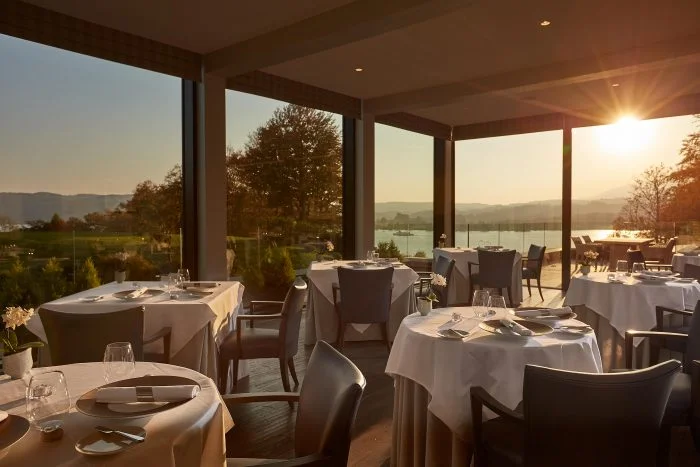
The story of Michelin stars begins in the early 20th century when the Michelin Guide was still a fledgling publication primarily focused on aiding motorists. The introduction of the star-rating system in 1920, with its humble inception of one, two, and three stars, marked a revolutionary moment in the dining world. These stars were not just accolades; they represented the pinnacle of culinary achievement.
A single Michelin star signified a restaurant was “a very good restaurant in its category.” Two stars proclaimed “excellent cooking, worth a detour,” while the coveted three stars reserved for establishments of “exceptional cuisine, worth a special journey.” This simple yet powerful system set a new standard for culinary excellence and gave birth to a culture of aspiration and competition among chefs and restaurateurs.
Beyond the Plate
Michelin stars are particularly illustrious because they go beyond evaluating food alone. While taste is paramount, the Michelin inspectors evaluate every aspect of the dining experience. This includes the quality and freshness of ingredients, the chef’s skill and creativity, the establishment’s ambiance and comfort, and the service’s efficiency and grace. The meticulousness of this evaluation has made Michelin stars a mark of holistic excellence in the culinary world.
A Global Impact
As Michelin expanded its reach to different countries, the influence of Michelin stars transcended borders. Restaurants across the globe aspired to earn these stars, recognizing that a single mention in the Michelin Guide could attract a wave of discerning diners and international acclaim.
For chefs, earning a Michelin star is not merely a professional achievement; it’s a life-altering event. It can catapult a talented chef to stardom, and the acquisition or loss of stars can make or break careers. The relentless pursuit of Michelin recognition has pushed chefs to experiment, innovate, and continually elevate their craft.
An Enthusiast’s Guide
Beyond the restaurant industry, Michelin stars significantly impact food enthusiasts. The guide has become a trusted resource for discerning diners seeking exceptional culinary experiences. Whether it’s a celebratory occasion, a romantic date, or a culinary adventure, the promise of a Michelin-starred meal is alluring.
The prestige of Michelin stars has given rise to culinary tourism, with travelers planning their itineraries around dining at Michelin-starred establishments. This phenomenon has breathed new life into quaint villages, countryside inns, and hidden gems that might have otherwise remained undiscovered.
A Lasting Legacy
Michelin stars are more than just symbols; they are the culmination of passion, dedication, and a relentless pursuit of culinary perfection. They have become synonymous with excellence in the culinary world, shaping how we dine and inspiring chefs and diners alike to reach for the stars. As we explore the Michelin Guide’s selection process for Europe’s best restaurants, we must appreciate Michelin Stars’ enduring reputation and transformative power. They are not just awards but beacons of culinary artistry and the embodiment of dining at its finest.
Anonymous Inspections
In the world of haute cuisine, where culinary excellence is paramount, the integrity of restaurant reviews is paramount. Michelin stars, the most coveted awards in the culinary realm, are not given out lightly. They result from a meticulous, anonymous inspection process that sets the Michelin Guide apart. In this section, we delve into the significance of these anonymous inspections, shedding light on why they are a cornerstone of Michelin’s reputation for culinary excellence.
The Element of Surprise
Anonymous inspections lie at the very heart of Michelin’s stringent selection process. Unlike many restaurant guides where establishments are aware of the presence of a reviewer or critic, Michelin inspectors dine in complete anonymity. They walk in as unassuming patrons, dressed like any other guest, and leave no trace of their true identity.
This element of surprise is fundamental. It ensures that restaurants provide the same level of service and culinary excellence to every diner, not just to those they suspect might be inspectors. It’s a practice that levels the playing field, giving every restaurant an equal opportunity to shine.
Impartiality and Objectivity
The importance of anonymity cannot be overstated when maintaining impartiality and objectivity in restaurant reviews. When chefs and staff are unaware of the presence of a Michelin inspector, there is no room for preferential treatment or special attention.
This objectivity is crucial for providing honest and unbiased reviews. Michelin stars are not awarded based on reputation or previous accolades; they are earned through consistently delivering exceptional dining experiences. Anonymous inspections help ensure that each restaurant is evaluated solely on the merits of its cuisine, service, and overall dining experience.
A Fair Evaluation
Michelin inspectors operate with a rigorous set of guidelines and criteria. They assess everything, from the quality of ingredients and the chefs’ ski skills the ambiance and service. However, their ability to do so fairly hinges on their anonymity. Without it, their presence could inadvertently influence the restaurant’s performance, leading to skewed and inaccurate assessments.
By maintaining their cover, Michelin inspectors can gauge the restaurant’s performance under normal circumstances. This ensures that the dining experience they evaluate is the same one that any other patron would receive, creating an unparalleled level of authenticity in the world of restaurant reviewing.
A Guard Against Complacency
The anonymity of Michelin inspectors is a powerful deterrent against restaurant complacency. When a restaurant knows it might be inspected at any time, it must consistently deliver its best. This culture of excellence benefits not only Michelin’s reviewers but also diners worldwide, who can trust that a Michelin-starred meal will always meet the highest standards.
The importance of anonymous inspections by Michelin inspectors must be balanced. They are the cornerstone of Michelin’s commitment to culinary excellence, impartiality, and authenticity. These anonymous visits ensure that Michelin stars are awarded based solely on the quality of the dining experience and not influenced by any external factors. As we continue to explore the Michelin Guide’s selection process for Europe’s best restaurants, we must acknowledge the crucial role played by these incognito inspectors in upholding the integrity of the Michelin Guide.
The Michelin Inspectors
The Michelin Guide stands as an unrivaled arbiter of restaurant quality in the world of fine dining and culinary excellence. Its team of anonymous and highly-trained inspectors is central to the guide’s reputation. These individuals, who dine in secrecy and anonymity, play a pivotal role in upholding the Michelin Guide’s unparalleled standards. In this section, we uncover the intricate roles and responsibilities of Michelin inspectors and the measures they take to maintain their enigmatic presence.
The Role of Michelin Inspectors
Culinary Connoisseurs
Michelin inspectors are not your typical restaurant reviewers or critics. They are seasoned culinary experts with extensive backgrounds in the food and hospitality industry. Their qualifications typically include culinary degrees, extensive experience in fine dining establishments, and a deep understanding of culinary traditions.
Inspectors are meticulous in their assessments. They visit each restaurant anonymously, blending seamlessly with the regular diners. Their evaluations encompass every aspect of the dining experience, from the taste and presentation of dishes to the staff’s attentiveness and the restaurant’s ambiance. They ensure that Michelin stars are awarded to establishments that consistently deliver exceptional dining experiences.
Meticulous Assessors
Unbiased and Objective
The most crucial responsibility of Michelin inspectors is to provide unbiased and objective reviews. They must leave all preconceived notions and personal preferences at the door, approaching each restaurant with an open mind. Their critiques are based solely on the merits of the dining experience, and they adhere to a stringent set of guidelines and criteria set forth by Michelin.
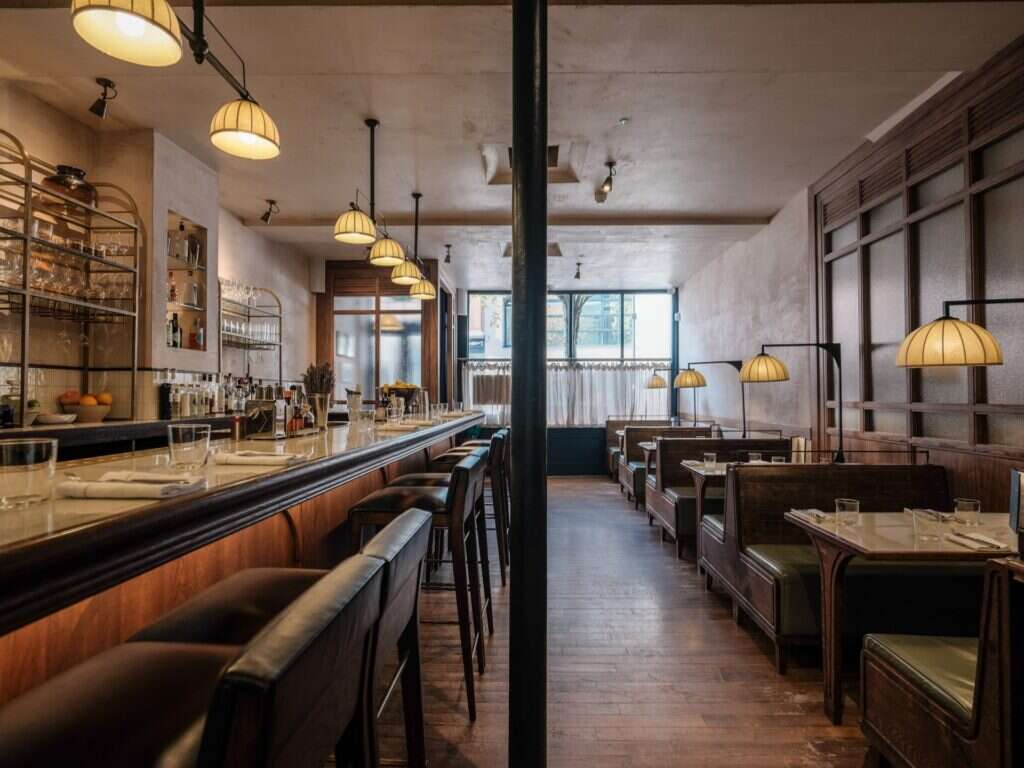
Maintaining Anonymity
The Art of Disguise
One of the most intriguing aspects of Michelin inspectors is their ability to maintain anonymity. They take great care to ensure they are indistinguishable from other restaurant patrons. This means they dress inconspicuously, avoid making reservations under their names, and pay for their meals like any other diner.
Varying Identities
To further complicate their identification, Michelin inspectors often employ multiple identities. They may visit a restaurant multiple times, each time assuming a different persona, to provide a comprehensive and unbiased assessment of the establishment.
Anonymous Dining
Michelin inspectors are masters of discretion. They avoid drawing attention to themselves, dine alone or in pairs, and refrain from taking notes during the meal. Instead, they rely on their keen memory and observational skills to capture the nuances of the dining experience.
Secrecy as a Shield
Maintaining anonymity serves a dual purpose. It ensures impartial evaluations and safeguards the inspectors’ safety and integrity. By remaining incognito, they prevent restaurants from preparing special meals or attempting to influence their Michelin inspectors to be the unsung heroes behind the coveted Michelin stars. Their roles as culinary connoisseurs, meticulous assessors, and unbiased reviewers are fundamental to the guide’s reputation for excellence. These dedicated individuals go to great lengths to maintain anonymity, ensuring that every Michelin-starred restaurant is evaluated fairly and without external influence. As we continue to explore the Michelin Guide’s selection process for Europe’s best restaurants, we must appreciate the dedication and professionalism of these inspectors who are committed to upholding the guide’s standards of culinary excellence.
The Three-Star Standard
In the world of gastronomy, where culinary excellence is celebrated and revered, there exists no greater honor than the coveted three Michelin stars. To earn this highest distinction in the Michelin Guide is to achieve culinary perfection—a level of artistry that is truly exceptional. But what does it take for a restaurant to reach this pinnacle of success? In this section, we delve into the meticulous criteria that must be met to earn the highest accolade in the Michelin world—the elusive three Michelin stars.
Exceptional Cuisine
At the heart of the three-star standard is the quality of the cuisine itself. To earn three Michelin stars, a restaurant’s dishes must transcend excellence. They should be meticulously crafted, showcasing a deep understanding of flavors, textures, and techniques. The flavors should be harmonious, the presentation impeccable, and each bite should be a revelation.
Michelin inspectors look for a level of cooking that is exceptional and consistent. More is needed for a restaurant to serve remarkable dishes occasionally; they must do so with every meal, day in and day out. The cuisine should be extraordinary, leaving a lasting impression on diners.
Exceptional Ingredients
Beyond culinary artistry, the quality of ingredients used is of paramount importance. Three-star restaurants source the finest and freshest ingredients available. Whether it’s locally grown produce, sustainable seafood, or premium cuts of meat, the ingredients must be of the highest caliber.
Michelin inspectors pay close attention to the ingredients’ origin, freshness, and uniqueness. Seasonal and locally sourced produce is often celebrated, reflecting a commitment to sustainability and a connection to the region’s culinary heritage.
Mastery of Technique
Mastery of culinary techniques is another essential criterion for three Michelin stars. Chefs in these establishments must possess an unparalleled level of skill and creativity. They should excel in classical cooking methods and push the boundaries of innovation.
Inspectors look for innovation in the way dishes are prepared and presented. More than replicating traditional recipes is needed; three-star restaurants should bring something new and exciting to the dining table. This mastery of technique should result in delicious but also memorable and unique dishes.
Consistency and Perfection
Consistency is a hallmark of three-star restaurants. The exceptional quality of cuisine, ingredients, and technique should be maintained consistently. It must be more than just an outstanding experience; it must be replicated with each visit.
Perfection is the standard. Every detail, from the seasoning to the plating, should be executed flawlessly. There is no room for error in a three-star kitchen. Michelin inspectors expect nothing less than a dining experience that transcends the ordinary and achieves culinary nirvana.
A Transformative Experience
Earning three Michelin stars is not just about serving a meal; it’s about creating a transformative dining experience. Diners should leave the restaurant feeling like they have embarked on a culinary journey, leaving an indelible mark on their senses and memories.
The criteria for earning three Michelin stars are stringent and exacting. It’s a level of culinary excellence that demands exceptional cuisine, exceptional ingredients, mastery of technique, unwavering consistency, and the ability to create a delightful dining experience. These criteria are a testament to the dedication, passion, and artistry of chefs and their teams who aspire to reach the highest echelons of gastronomy. As we continue to explore the Michelin Guide’s selection process for Europe’s best restaurants, pursuing the elusive three Michelin stars remains the ultimate dream for many in the culinary world.
Two and One-Star Criteria
While the three Michelin stars represent the pinnacle of culinary achievement, the Michelin Guide’s recognition extends to a broader range of exceptional restaurants. Earning two or one Michelin star(s) remains a prestigious accolade that signifies outstanding dining experiences. In this section, we explore the specific criteria that restaurants must meet to earn these esteemed distinctions.
Two Michelin Stars
Exceptional Quality
To earn two Michelin stars, a restaurant must consistently offer exceptional quality in every aspect of the dining experience. This includes not only the cuisine but also the ingredients, preparation techniques, and presentation. The food should be creative and memorable, showcasing the chef’s artistry and mastery of culinary techniques.
Unique Flavors
Two-star restaurants are expected to deliver dishes that tantalize the taste buds with unique and harmonious flavors. These flavors should be well-balanced and leave a lasting impression on diners. The culinary creations should reflect innovation and a deep understanding of ingredients.
Attention to Detail
Attention to detail is paramount for two Michelin stars. Every aspect of the dining experience, from the service and ambiance to the plating and wine selection, should reflect a commitment to excellence. The restaurant should consistently provide a service that is attentive, knowledgeable, and responsive to diners’ needs.
Consistency
Consistency is a hallmark of two-star restaurants. They must consistently deliver an exceptional dining experience, ensuring that every diner is satisfied. Two Michelin stars are not awarded based on occasional brilliance; they are earned through unwavering dedication to quality.
One Michelin Star
High-Quality Cuisine
To earn one Michelin star, a restaurant must offer high-quality cuisine that is well-prepared and delicious. While it may reach a different level of innovation and creativity than two-star establishments, it should still provide memorable and enjoyable dishes.
Fresh and Quality Ingredients
One-star restaurants should prioritize the use of fresh and quality ingredients. While they may not need to source the most rare and exclusive ingredients, they should showcase a commitment to using the best available products, which may include locally sourced and seasonal ingredients.
Skillful Preparation
Skillful preparation of dishes is essential for one Michelin star. Chefs should demonstrate proficiency in culinary techniques and the ability to create well-executed dishes. While innovation is appreciated, the focus should be on delivering classic dishes exceptionally well.
A Memorable Experience
Earning one Michelin star is not just about the food; it’s about providing diners with a memorable experience. This includes good service, a pleasant ambiance, and dishes that stand out in flavor and presentation. The restaurant should leave a positive impression on its guests.
The criteria for earning two and one Michelin star(s) indicate exceptional dining experiences. Whether it’s the innovative cuisine, the commitment to quality ingredients, or the attention to detail in service, these criteria highlight the qualities that make a restaurant stand out in the Michelin Guide. While three stars represent the pinnacle of culinary artistry, two and one Michelin stars continue to celebrate the diversity and excellence of dining establishments worldwide. As we continue to explore the Michelin Guide’s selection process for Europe’s best restaurants, we recognize that each star represents a unique culinary journey worth embarking upon.
Recognitions Beyond Stars
While Michelin stars undoubtedly steal the spotlight in the Michelin Guide, two more culinary accolades often go under the radar but carry significant weight in the culinary world—the Michelin Plate and the Bib Gourmand. These designations recognize restaurants that may not have reached the star level but still offer exceptional dining experiences. This section explores the Michelin Plate and Bib Gourmand designations and their profound significance.
The Michelin Plate
A Symbol of Quality
The Michelin Plate is a designation bestowed upon restaurants that offer a consistently good dining experience. These establishments may have yet to achieve star status, but they maintain a quality and excellence that deserves recognition. The Michelin Plate is a testament to the dedication and commitment of these restaurants to deliver enjoyable meals.
Diversity of Cuisine
What sets the Michelin Plate apart is its inclusivity. It encompasses a wide range of culinary styles and cuisines. Whether it’s a cozy family-run trattoria serving comforting Italian fare or a bustling street food vendor dishing out authentic regional dishes, the Michelin Plate celebrates diversity and the rich tapestry of global cuisine.
A Reliable Guide
For diners, the Michelin Plate is a reliable guide to discovering hidden culinary gems. These restaurants may not have stars, but they offer a dining experience that is well above average. It’s an assurance that you can enjoy a satisfying meal without the formalities and price tags often associated with Michelin-starred dining.
The Bib Gourmand
Affordable Excellence
The Bib Gourmand is perhaps the most approachable and cherished of Michelin’s designations. It recognizes restaurants that offer excellent food at a reasonable price. These restaurants are often celebrated for their affordability, making them accessible to many diners.
Emphasis on Value
The Bib Gourmand designation reflects Michelin’s acknowledgment that exceptional dining experiences need not break the bank. It spotlights restaurants prioritizing value for money while delivering memorable flavors and dishes.
A Local Touch
Bib Gourmand restaurants often embrace regional and traditional cuisine. They celebrate local ingredients, culinary traditions, and flavors, providing diners an authentic taste of the area’s food culture. Locals and visitors often love these restaurants for their authenticity and approachability.
The Significance
The Michelin Plate and Bib Gourmand designations are significant for several reasons:
Celebrating Diversity
They celebrate the diversity of culinary traditions and styles, recognizing that excellence can be found in various dining experiences.
Supporting Local Favorites
These designations often highlight beloved local favorites, helping them thrive and continue to serve their communities.
Making Fine Dining Accessible
The Bib Gourmand, in particular, makes fine dining more accessible, allowing a broader audience to enjoy exceptional cuisine without the usual high costs.
The Michelin Plate and Bib Gourmand designations are a testament to Michelin’s commitment to celebrating exceptional dining experiences in all their forms. They highlight quality, affordability, and diversity in the culinary world, ensuring that Michelin’s influence extends beyond the realm of stars. These designations serve as a valuable guide for diners seeking memorable meals that cater to a wide range of tastes and budgets. As we continue to explore the Michelin Guide’s selection process for Europe’s best restaurants, let us remember that culinary excellence comes in many forms, and the Michelin Plate and Bib Gourmand are there to guide us on our gastronomic journeys.
The Pursuit of Perfection
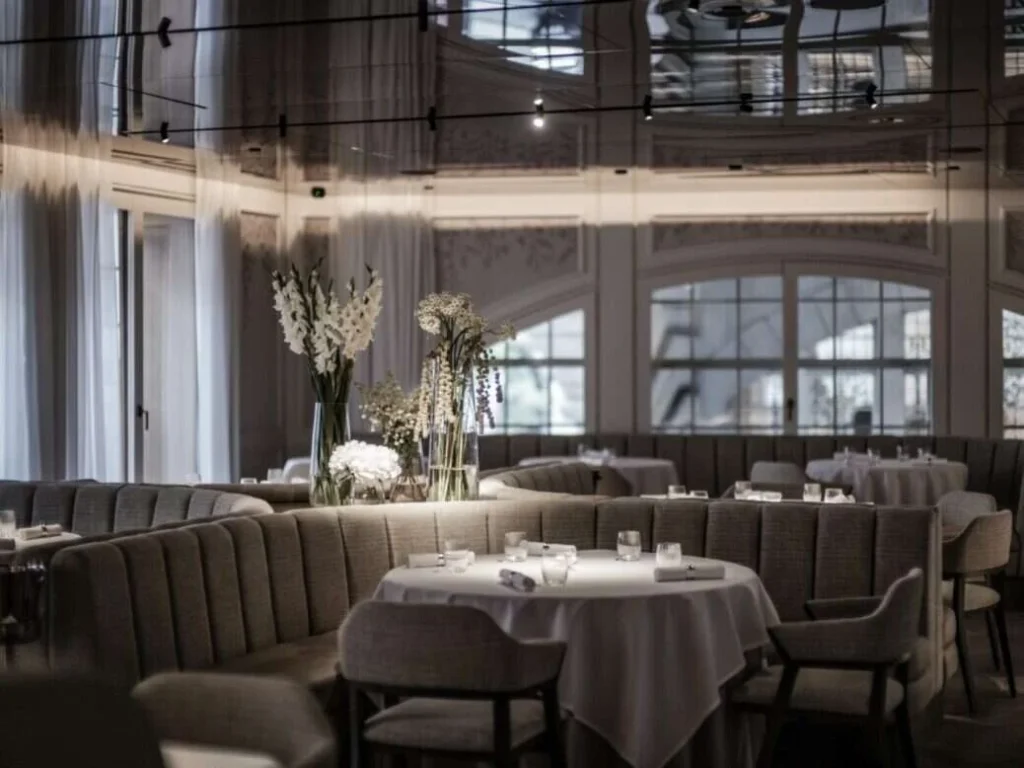
In gastronomy, earning and retaining Michelin recognition is a pursuit of perfection that requires unwavering dedication and excellence. Michelin stars and the Michelin Plate and Bib Gourmand designations are more than just awards; they are a testament to the exceptional standards restaurants must maintain to earn and keep such prestigious recognition. This section delves into the exacting criteria and high standards that restaurants must uphold on their journey to Michelin stardom.
The Michelin Star Standards
A Commitment to Excellence
At the heart of Michelin’s recognition is an unwavering commitment to excellence in every aspect of the dining experience. From the cuisine’s quality and creativity to the service’s attentiveness and the restaurant’s ambiance, Michelin inspectors evaluate every detail with meticulous precision.
Consistency is Key
One of the most stringent standards restaurants must meet is consistency. To earn and retain Michelin stars, restaurants must consistently deliver an exceptional dining experience. It’s not enough to shine on special occasions; every meal, every day, must meet the same high standards.
The Pursuit of Perfection
Michelin stars are not just awards; they represent the pursuit of perfection. Chefs and their teams must continually strive to push the boundaries of culinary artistry. They must innovate, experiment, and evolve to deliver dishes that meet and exceed expectations.
The Michelin Plate and Bib Gourmand
The Quest for Quality
Pursuing perfection takes on a different form for restaurants recognized with the Michelin Plate or Bib Gourmand designations. These establishments may not have stars, but they must prioritize quality in their offerings.
Authenticity and Value
Restaurants designated with the Bib Gourmand must emphasize affordability while maintaining authenticity and flavor. This standard highlights that exceptional dining experiences can be within reach of the average diner.
A Balanced Approach
The Michelin Plate recognizes restaurants that consistently deliver quality, emphasizing a balanced approach to cuisine, service, and ambiance. This recognition assures diners that they can expect a satisfying meal every time they visit.
The Significance
The high standards set by Michelin recognition have several significant implications:
Inspiring Excellence
Michelin stars and the Michelin Plate and Bib Gourmand inspire chefs and restaurant teams to aim for nothing less than excellence in their craft.
Elevating Dining Culture
These standards elevate the dining culture, encouraging restaurants to continuously innovate and improve, thus benefiting diners who seek memorable culinary experiences.
Preserving Tradition
Michelin recognition celebrates tradition, as many starred restaurants showcase regional and cultural culinary heritage.
The pursuit of perfection in the culinary world is epitomized by Michelin recognition. Whether it’s the exacting standards for Michelin stars or the emphasis on quality and value for the Michelin Plate and Bib Gourmand, these distinctions reflect the commitment of chefs and restaurant teams to provide unforgettable dining experiences. Pursuing perfection is not just about earning recognition; it’s about an enduring commitment to excellence that shapes the gastronomic landscape and delights diners worldwide. As we continue to explore the Michelin Guide’s selection process for Europe’s best restaurants, let us recognize the dedication and passion that underlie the pursuit of perfection in the culinary arts.
The Pressure of Expectations
Michelin stars, the most coveted awards in the culinary world, come with an aura of prestige and recognition that can transform a restaurant overnight. While these stars are a testament to culinary excellence, they also bring an immense weight of expectations and pressures, particularly for chefs and restaurant staff. This section delves into the pressures that Michelin stars can impose on those who strive to maintain these esteemed accolades.
The Pursuit of Perfection
Unwavering Standards
One of the primary sources of pressure for Michelin-starred restaurants is the relentless pursuit of perfection. The standards set by Michelin inspectors are exacting, demanding that every aspect of the dining experience, from the cuisine to the service, be consistently exceptional.
The Fear of Falling Short
Michelin stars are not just awards; they are symbols of culinary artistry. Chefs and their teams live with the constant fear of falling short of these lofty standards. Any deviation from perfection can result in a loss of stars or recognition.
The Impact on Creativity
Balancing Innovation and Tradition
Michelin-starred restaurants are expected to strike a delicate balance between innovation and tradition. While innovation is celebrated, it must stay within the establishment’s core identity and diners’ expectations.
The Challenge of Evolving
The pressure to maintain a star or earn additional stars can sometimes stifle creativity. Chefs may feel compelled to stick to what has earned them recognition rather than taking risks and exploring new culinary horizons.
The Toll on Work-Life Balance
Long Hours and Dedication
The pursuit of Michelin recognition often demands long hours and unwavering dedication from chefs and staff. The goal is consistently delivering exceptional dining experiences, which can mean sacrificing personal time and work-life balance.
Burnout and Stress
The intense pressure to maintain Michelin stars can lead to burnout and high stress among restaurant teams. The fear of losing stars or the relentless pursuit of perfection can affect mental and physical well-being.
The Impact on Finances
The Cost of Excellence
Maintaining Michelin stars often comes with a significant financial burden. The investment required in terms of top-quality ingredients, skilled staff, and maintaining a high standard of service can strain a restaurant’s finances.
The Risk of Diminishing Returns
The pressure to maintain stars can sometimes lead to diminishing returns. The costs of maintaining Michelin-level excellence may only sometimes be offset by increased patronage or higher prices.
Coping with the Spotlight
Increased Expectations
With Michelin’s recognition comes increased expectations from diners and critics alike. The spotlight shines brighter on Michelin-starred restaurants, and any misstep or inconsistency can be quickly noticed and scrutinized.
Dealing with Criticism
Restaurant staff must also learn to navigate the world of culinary criticism. Negative reviews or critiques can be especially challenging when the expectations are high.
The Reward of Excellence
Despite the immense pressures and expectations, Michelin stars remain the ultimate affirmation of culinary excellence. They are a testament to the dedication, passion, and artistry of chefs and their teams. While the pressure to maintain these stars is undeniably intense, the reward of knowing their efforts have been recognized on the highest level drives many to pursue excellence in the culinary world.
The pressures that Michelin stars impose on chefs and staff reflect the high standards and expectations associated with these accolades. Pursuing culinary perfection can be demanding and challenging but also deeply rewarding. Michelin stars not only bring recognition but also a sense of fulfillment for those who dedicate their lives to the art of fine dining. As we continue to explore the Michelin Guide’s selection process for Europe’s best restaurants, let us appreciate the resilience and passion of the culinary professionals who endure the pressure of expectations in their pursuit of excellence.
The Global Culinary Map
The Michelin Guide, created as a tool for motorists in the early 20th century, has evolved into a culinary authority that significantly influences dining trends and the global culinary map. With its iconic Michelin stars and recognitions, the guide has celebrated culinary excellence and played a pivotal role in shaping culinary trends worldwide. In this section, we explore how the Michelin Guide has left an indelible mark on the world of cuisine.
Celebrating Tradition and Innovation
Promoting Regional Cuisine

One of the most profound impacts of the Michelin Guide is its celebration of regional and traditional cuisine. The guide has recognized and elevated local specialties, encouraging diners to explore different regions’ unique flavors and culinary traditions.
Inspiring Innovation
While honoring tradition, Michelin stars also reward innovation. Recognized chefs are often celebrated for pushing the boundaries of culinary creativity and inspiring others to experiment with new techniques, ingredients, and presentations.
Encouraging Culinary Tourism
Culinary Destinations
Cities and regions with Michelin-starred restaurants have become culinary destinations. Travelers increasingly plan trips around dining experiences, resulting in a boost to local tourism and the restaurant industry.
Gourmet Getaways
Culinary tourism has extended beyond individual meals to encompass gourmet getaways, where travelers embark on culinary journeys to savor the finest dining experiences, creating a new niche in the travel industry.
Raising Dining Standards
Excellence as the Norm
The Michelin Guide has elevated dining standards globally. Restaurants aspire to meet Michelin’s exacting criteria, resulting in improved service, quality, and creativity across the culinary spectrum.
Benchmark for Excellence
Michelin stars and recognitions have become benchmarks for culinary excellence, influencing fine dining establishments, street food vendors, and casual eateries to excel in their offerings.
Promoting Sustainability
Embracing Local and Sustainable Ingredients
The Michelin Guide has encouraged restaurants to embrace local and sustainable ingredients, promoting ethical and eco-friendly dining practices.
Sustainability as a Criterion
Sustainability has become one of the criteria by which restaurants are evaluated, reflecting a broader shift in the culinary world towards responsible and environmentally conscious dining.
Fostering Culinary Careers
Attracting Talent
Michelin-starred restaurants attract top culinary talent, providing chefs and staff opportunities for growth, learning, and recognition.
Culinary Education
The pursuit of Michelin stars has fostered a culture of culinary education and continuous improvement as chefs and their teams strive for excellence.
Shaping Culinary Conversations
Influence on Media and Criticism
The Michelin Guide’s influence extends to culinary media and criticism. Michelin-starred restaurants often become the focus of culinary discourse and reviews.
Culinary Trends
Michelin-starred chefs and their innovative creations often set culinary trends, influencing restaurants, home cooking, and food culture.
The Michelin Guide’s impact on the global culinary map is undeniable. It celebrates tradition and innovation, encourages culinary tourism, raises dining standards, promotes sustainability, fosters culinary careers, and shapes culinary conversations and trends worldwide. As we continue to explore the Michelin Guide’s selection process for Europe’s best restaurants, we must acknowledge its profound and enduring influence on the world of cuisine, making it an essential part of culinary history and innovation.
Michelin’s Transparency
The Michelin Guide’s reputation for culinary excellence and its coveted stars rely heavily on the transparency of its selection process. Since its inception over a century ago, Michelin has strived to maintain an open and impartial evaluation system, ensuring that restaurants and diners have confidence in its recommendations. This section delves into Michelin’s measures to uphold transparency in its selection process.
Anonymity of Inspectors
Incognito Inspections
One of the cornerstones of Michelin’s transparency is the anonymity of its inspectors. Michelin inspectors operate incognito, meaning they do not reveal their identity or purpose when visiting restaurants. This ensures that restaurants receive the same treatment as any other diner, eliminating the possibility of preferential treatment.
Extensive Training
Michelin inspectors undergo rigorous training to maintain their anonymity and evaluate restaurants impartially. They are trained to observe and assess various aspects of the dining experience, from cuisine and service to ambiance and cleanliness.
Consistency and Objectivity
Objective Evaluation
Michelin emphasizes the objectivity of its evaluation process. Inspectors follow a detailed set of criteria to assess restaurants, including the cuisine’s quality and creativity, the use of ingredients, service standards, and even the value for money.
Consistent Application
Michelin strives for consistency in its evaluations. Restaurants are regularly visited and assessed to ensure the standards are maintained over time. Consistency in evaluations helps build trust in the Michelin Guide’s recommendations.
Anonymous Booking Process
Standard Booking Procedures
When making reservations, Michelin inspectors use the same booking procedures as any other diner. They do not identify as Michelin inspectors, ensuring that the restaurant staff treats them as regular patrons.
Eliminating Bias
The anonymous booking process helps eliminate any potential bias if restaurants know of an impending Michelin inspection.
Multiple Visits
Comprehensive Assessments
Michelin inspectors visit restaurants multiple times before awarding stars or other recognitions. This thorough evaluation process allows inspectors to assess the restaurant’s consistency and the ability to maintain high standards.
Preventing Snap Judgments
Multiple visits prevent Michelin from making snap judgments about a restaurant based on a single experience, further enhancing the reliability of its recommendations.
Consultation with Experts
Collaboration with Culinary Experts
Michelin consults with culinary experts and industry professionals to validate its evaluations. This external input ensures that Michelin’s assessments align with broader culinary expertise and knowledge.
Anonymous Assessments
Even when consulting with experts, Michelin maintains the anonymity of its inspectors, ensuring that the presence of Michelin does not influence external opinions.
Transparent Criteria
Publicly Available Criteria
Michelin makes its evaluation criteria publicly available, allowing restaurants and the public to understand the standards by which restaurants are assessed. This transparency fosters trust in Michelin’s selection process.
Clear Guidelines
Restaurants are aware of the specific criteria by which they are evaluated, which can help them strive for excellence and meet Michelin’s standards.
Michelin’s commitment to transparency in its selection process is fundamental to its credibility and trustworthiness. Through anonymous inspections, rigorous training, objective evaluation criteria, consistent assessments, and consultation with culinary experts, Michelin ensures that its recommendations are impartial, reliable, and reflect culinary excellence. As we continue to explore the Michelin Guide’s selection process for Europe’s best restaurants, we must appreciate the dedication to transparency that underlies its prestigious recommendations.
Controversies and Criticisms
While the Michelin Guide is celebrated for its prestigious star ratings and culinary recommendations, it is not immune to controversies and criticisms. Over the years, the guide has faced scrutiny and debate from the culinary industry and the public. This section delves into some of the common criticisms and controversies surrounding Michelin star ratings.
Subjectivity in Evaluation
Lack of Transparency
One of the primary criticisms directed at Michelin is the perceived lack of transparency in its evaluation process. Critics argue that the guide needs to provide more information about how inspectors arrive at their ratings, leading to questions about the objectivity of the assessments.
Individual Taste
Michelin inspectors are human; like any diner, they have individual tastes and preferences. Some critics argue that this subjectivity can lead to inconsistencies in ratings and recognition.
Pressure and Stress
Intense Pressure
Michelin stars are known to bring immense pressure to chefs and restaurant staff. The relentless pursuit of perfection to earn and maintain stars can take a toll on culinary professionals’ mental and physical well-being.
Impact on Creativity
Some chefs have voiced concerns that pursuing Michelin stars can stifle creativity. The fear of losing stars may discourage chefs from taking risks and experimenting with new culinary ideas.
Impact on Dining Culture
Focus on Fine Dining
The Michelin Guide is often criticized for its focus on fine dining establishments, which can lead to a bias against more casual or ethnic restaurants. Critics argue that this focus narrows the guide’s perspective on culinary excellence.
Neglecting Local Gems
Some have claimed that Michelin overlooks small, local eateries that offer exceptional cuisine in favor of more renowned, high-end restaurants. This can lead to the underrepresentation of certain culinary traditions.
Economic and Business Impact
High Costs
Maintaining a Michelin-starred status can be financially burdensome for restaurants. The costs associated with top-quality ingredients, staff, and service standards can strain a restaurant’s finances.
Risk of Closure
Ironically, the pressure to maintain stars can sometimes lead to the closure of restaurants. If a restaurant cannot meet the financial demands of Michelin-level excellence, it may have to shut its doors.
Stereotyping of Cuisine
French-Centric
The Michelin Guide originated in France, and some critics argue it is biased toward French cuisine. This can result in a perception that Michelin stars are more readily awarded to French restaurants.
Neglecting Ethnic Cuisine
Ethnic cuisine, such as Asian, African, or Latin American, has sometimes been underrepresented in Michelin ratings. Critics argue that this can perpetuate a Eurocentric bias in culinary recognition.
Impact on Restaurants
Changing Ownership
When a Michelin-starred restaurant changes ownership or culinary direction, it can create confusion and uncertainty about its star rating.
Potential for Exploitation
Some chefs have been accused of exploiting their Michelin stars for personal gain, using the accolades to charge exorbitant prices without necessarily delivering a corresponding level of quality.
While the Michelin Guide is revered for its role in recognizing culinary excellence, it has its share of controversies and criticisms. Subjectivity in evaluation, pressure on chefs, potential biases, and economic challenges are some issues that have sparked debates within the culinary industry and among diners. As we continue to explore the Michelin Guide’s selection process for Europe’s best restaurants, we must acknowledge these criticisms and controversies while recognizing the guide’s significant impact on gastronomy.
As we conclude our exploration of “How the Michelin Guide Selects Europe’s Best Restaurants,” it’s crucial to acknowledge the complexities and controversies surrounding the guide’s star ratings. While Michelin stars are undoubtedly a symbol of culinary excellence and have significantly influenced the global dining landscape, they are not without their share of criticisms.
Critics have questioned the guide’s transparency, citing a lack of clarity in the evaluation process and concerns about the subjectivity of individual inspectors. The intense pressure that Michelin stars can bring to chefs and staff has also raised concerns about work-life balance and creativity in the kitchen.
Moreover, the guide’s focus on fine dining establishments has led to perceptions of bias against more casual or ethnic restaurants, potentially neglecting some culinary gems. The economic burden of maintaining Michelin-level excellence has sometimes led to the closure of restaurants, which seems paradoxical given the guide’s mission to celebrate outstanding dining experiences.
However, amidst these criticisms, we cannot overlook the profound impact of the Michelin Guide on the culinary world. It has celebrated both tradition and innovation, encouraged culinary tourism, raised dining standards, promoted sustainability, fostered culinary careers, and shaped culinary trends on a global scale.
Michelin stars remain a source of inspiration and aspiration for chefs and restaurants worldwide, pushing them to strive for culinary perfection. The guide has played a vital role in elevating the culinary arts to unprecedented recognition and respect.
In closing, with all its intricacies and controversies, the Michelin Guide stands as a testament to the enduring pursuit of culinary excellence. It continues to guide our gastronomic journeys, inviting us to explore the diverse flavors and traditions that make the food world so rich and captivating. Whether we’re diners, chefs, or culinary enthusiasts, the Michelin Guide remains an influential force, shaping how we experience and appreciate the art of dining.

